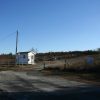KJIPUKTUK (Halifax) – What is environmentalism? What do we mean when we talk about “the environment” here on unceded Mi’kmaq territory? Who defines what’s included in that meaning, and what’s left out? At Shades of Green, these juicy questions have led to… well, more questions.
The Canadian Encyclopedia tells us that the environmental movement got started in the early 1900s, “when conservationists aimed to slow the rapid depletion of Canadian resources in favour of more regulated management.” It sounds like a time where settlers were beginning to sense that the forests of Turtle Island weren’t as endless as they’d once seemed.
When we talked to Mi’kmaq rights holder and land defender Barbara Low, she described the origins of environmentalism a little differently. “When settlers started showing up we were doing our best to show them how to be human beings, like us. ‘We’re the human beings and this is how the human beings interact with the trees and the rocks and the beavers and the deer and the moose’. They wouldn’t listen… they were just going to go on their way. And so they went on their way. Now a few hundred short years later, they come around and they are like, ‘We need to save the environment!’ ‘Join us!”

Environmentalism has shifted and changed over time, but as we’ll hear in this episode, the movement is still shaped by colonial thinking, including paternalism and unacknowledged racism. As Dr. Carolyn Finney told us: “A student asked me, ‘I don’t know how to say this… but it’s so interesting how in the environmental movement it seems people care so much about animals, but they don’t really care about Black people. So what do we do with that?” I said, ‘well you just hit that on the head!’”
We found that folks outside of the mainstream environmental movement tend to define “the environment” more broadly. Mi’kmaq artist and metal fabricator Tayla Paul summed it up like this: “This is my environment too. Kjipuktuk. Halifax. This is where my ancestors are. This is where their bodies are buried in the ground. This is the environment. It’s not just about the trees and the undeveloped areas. It is definitely about those areas but it’s not just about those areas. It’s about the environment that we experience every day, and that includes the social environment.”

Environmental justice takes that expanded definition and works to highlight how race, space and power intersect in unjust ways across the land and in our communities. As poet and activist El Jones put it, “The environment isn’t unattached to police brutality, police shootings and mass incarceration of black people. For me, adding justice moves it beyond simply thinking in terms of land and environment to thinking about how space and race intersect and interact, and how poverty and space interact.”
We hope you’ll tune into our first Shades of Green podcast episode, “What is the Environment and Where is the Justice?” Pause, listen and get curious with us as we explore some different ways of understanding ourselves, our environment, and our work to protect Mother Earth.
Featured voices:
- Dr. Julian Ageyman
- Randolph Haluza-Delay
- Eriel Deranger
- Dr. Carolyn Finney
- El Jones
- Mark Leeming
- Barbara Low
- Catherine Martin
- Tayla Paul
- Dr. Cheryl Teelucksingh
- Dr. Ingrid Waldron
Quotes have been condensed here for clarity and brevity. Huge thanks to every one of the ears and voices that made this episode possible. Further thanks to Joanna Brenchley, Erica Butler, Jen Graham and Christen Kong. Our theme was composed by the incredible Nick Durado.
This project has been supported by Ecology Action Centre and the Community Conservation Research Network
Subscribe on iTunes, SoundCloud, Stitcher, or Feedburner. And follow us on Twitter!
Further reading:
Elder Daniel Paul: Land of the Mi’kmaq
1752 Peace and Friendship Treaty
JAMES MATTHEW SIMON v. THE QUEEN (1985)
Chelsea Vowel: Beyond Territorial Acknowledgements
Mark Leeming: Varieties of Nova Scotian Environmentalism
Jedidiah Purdy: Environmentalism’s Racist History
Pachamama Alliance: Race and Class Privilege in the Environmental Movement
17 Principles of Environmental Justice
Grist: A History of Environmental Justice in 4 Minutes
Dr. Carolyn Finney: “Hiking While Black”
Nicole Greenfield: The Connection Between Mass Incarceration and Environmental Justice
Eriel Deranger: Indigenous Communities Are Leading the Environmental Justice Movement
George Lipsitz: Unexpected Affiliations: Environmental Justice and the New Social Movements




Thanks Sadie,you have been shared far and wide! I have also enjoyed the advocat!
http://https://nsadvocate.org/2018/02/01/shades-of-green-podcast-episode-1-what-is-the-environment-and-where-is-the-justice/
Hello there!
Great podcast…humbly suggest a good mobilization pathway towards securing better environmental justice in Labrador…small scale individually organized projects e.g….
https://www.linkedin.com/pulse/port-hope-simpson-town-nunatukavut-newfoundland-llewelyn-pritchard-ma/?published=t … Port Hope Simpson Town, NunatuKavut, Newfoundland and Labrador, Canada Sustainable Travel and Tourism Developments …https://anitasaffordablebookstore.blogspot.co.uk/ Anitas Affordable Bookstore Supports https://goo.gl/bJucWD Labrador Leads the World in Opposition to Hydro Dams
All the best
Llewelyn Pritchard